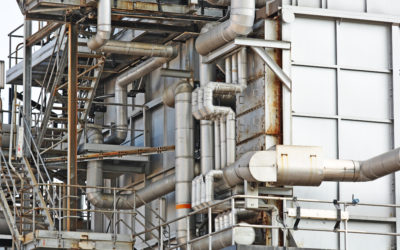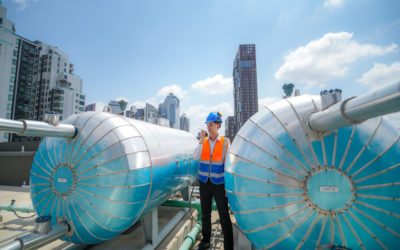Navigating High-Temperature Challenges in Nuclear Power Plants with HeatX
As the global energy landscape shifts towards sustainable and reliable power sources, nuclear energy is experiencing a resurgence. Modern nuclear reactors, especially advanced high-temperature designs, operate at elevated temperatures to achieve higher efficiency and support diverse applications like hydrogen production. However, these high-temperature environments present significant challenges, particularly concerning the performance and longevity of heat exchangers. Innovative solutions, such as HeatX surface treatments, are emerging as pivotal in addressing these challenges.
High-Temperature Challenges in Nuclear Reactors
Advanced nuclear reactors, including Very High Temperature Reactors (VHTRs), are designed to operate at temperatures up to 1000°C. While these temperatures enhance thermal efficiency, they also subject reactor components, especially heat exchangers, to extreme conditions that can lead to:
- Material Degradation: Prolonged exposure to high temperatures can cause structural changes in materials, leading to strength loss and reduced durability.
- Corrosion: High-temperature environments, often coupled with corrosive coolants or impurities, can accelerate corrosion rates, compromising the integrity of heat exchangers.
- Creep and Fatigue: Sustained high temperatures can result in creep (slow deformation over time) and thermal fatigue, leading to cracks and eventual failure of components.
Addressing these challenges is crucial for nuclear power plants safe and efficient operation.
The Role of Heat Exchangers in Nuclear Power Plants
Heat exchangers are integral to nuclear power plants, facilitating the transfer of heat from the reactor core to the power generation cycle. High-temperature reactors must withstand extreme conditions while maintaining high thermal efficiency. The development of compact heat exchangers for next-generation reactors focuses on materials that can endure these harsh environments.
HeatX: Enhancing Heat Exchanger Performance
HeatX surface treatments offer a cutting-edge solution to the challenges faced by heat exchangers in high-temperature nuclear reactors. Developed as advanced nanocomposites, HeatX treatments provide:
- Corrosion Resistance: HeatX shields heat exchanger surfaces from corrosive elements by forming a protective barrier, significantly extending their operational lifespan.
- Fouling Mitigation: HeatX’s omniphobic properties repel both water- and oil-based contaminants, reducing fouling and maintaining optimal heat transfer efficiency.
- Thermal Stability: Designed to withstand high temperatures, HeatX ensures that heat exchangers maintain their structural integrity and performance under extreme conditions.
Case Study: HeatX in Power Generation
The efficacy of HeatX has been demonstrated in various power generation settings. For instance, its application in heat exchangers at the Hawaiian Electric Company (HECO) resulted in an estimated $1.5 million in savings over five years per heat exchanger and extended service intervals from 6 months to 60 months.
Addressing the associated challenges becomes imperative as nuclear power plants evolve to operate at higher temperatures for improved efficiency. HeatX surface treatments provide a robust solution, enhancing the durability and performance of heat exchangers in these demanding environments. By mitigating corrosion, reducing fouling, and ensuring thermal stability, HeatX plays a crucial role in the advancement of nuclear energy technology, supporting a sustainable and reliable energy future. Learn more about HeatX with our experts.



